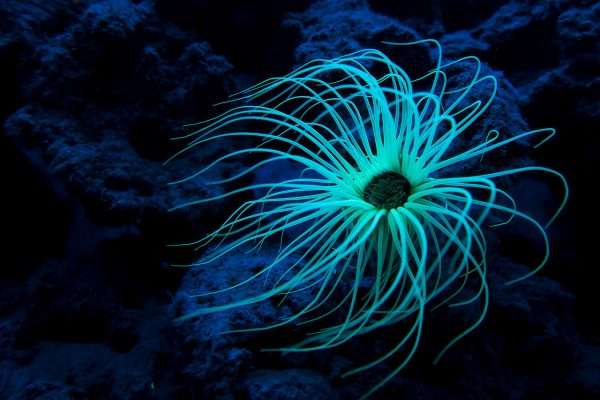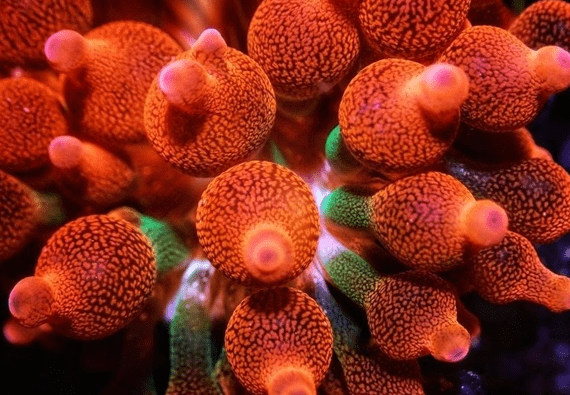
The Tube Anemone is most frequently found in the sediments of the Sydney Harbour. Their outer branches are usually purple to creamy-brown whilst all have a long pale line down the length of each branch. The inner tentacles are usually of creamy colour.
Tube anemone, (genus Cerianthus), any of a group of invertebrate marine animals of the class Anthozoa (phylum Cnidaria) contained by an elongated polyp form or a hollow stalk like structure with mouth and tentacles at the upper end; the polyp lives in a tube of slime on the ocean bottom. The genus is widespread in tropical and subtropical geographic distribution. Of these, the largest, Cerianthus americanus, is a shallow water species in the region from New England to Florida and may reach 24 inches.

Habitat
Tube Anemones live in coastal waters, estuaries and soft seabeds. Though possible, the Ceriantharia will likely not home itself in the rock work of your aquarium. The Ceriantharia prefers to live in sand, mud, and other soft substrates. It can attach to rocks though for stability.
Tube anemones are a type of small invertebrate that creates a tube out of its discharge, called nematocysts, and lives within this tube. Tube anemones can then move like true anemones within their tubes and attach to rocks.
Distribution
The Tube Anemone is found in New South Wales.
Tube Anemone Size
The tube anemone can grow as much as 8 inches (20 cm) across with the tentacles spanning a foot (30.5 cm) or more.
Feeding and Nutrition:
In the reef tank, tube anemones will eat plankton and a variety of the different pods available. Though it is important to remember, if you have fish in your tanks, you may have less pods available than you think. Because of this, you will most likely need to feed your tube anemone. Tube anemones tend to like a variety of foods such as mysis shrimp, brine shrimp, or even small pieces of krill. Providing this food 1 to 3 times per week will likely be enough to satisfy the tube anemone.
Table:





